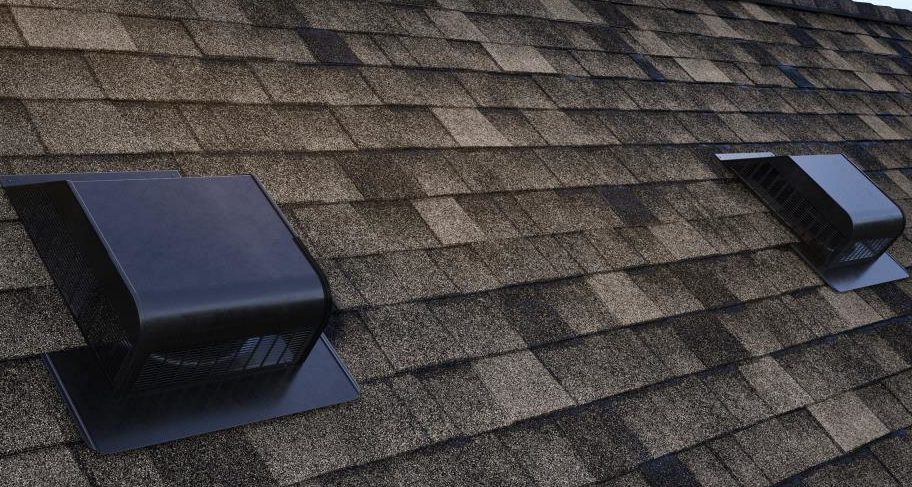
Level rooftop ventilation considers the course of air. The situating of the ventilation relies upon whether it is a cold or warm rooftop. At the point when warm protection is utilized ventilation should likewise be on the underside. A warm-level rooftop ordinarily doesn't need ventilation.
A level rooftop is a kind of rooftop that has no incline. To work appropriately, it needs ventilation from within and outside to keep away from buildup from happening. Ventilation is the air that comes into a room from an external perspective. It makes the air in a house better to inhale and helps eliminate dampness from the air.
This is where waterproof films become possibly the most important factor - they can give insurance against dampness while as yet considering normal ventilation. Things being what they are, how much ventilation does a level rooftop require?
The absolute minimum measure of ventilation for a level rooftop is 1 square foot for every 150 square feet of the surface region. At the end of the day, if your level rooftop estimates 100 square feet, you should introduce 10 square feet of ventilation. Remember that this is the absolute minimum and a reversed peak fan would be a superior choice.
Particularly throughout the colder time of year, you could ask why your rooftop needs vents. All things considered, aren't those vents allowing your warm, adapted air to escape outside? A smidgen, yet ventilation is as yet key to forestall a few difficult issues that could foster in your structure in any case.
Warm air rises and will normally gather in your home underneath the rooftop. If you have a hot rooftop, this warm air changes the temperature of your rooftop decking, as it doesn't have ventilation to ease the intensity. The distinction in temperature between the rooftop deck and the external air causes buildup.
You've presumably encountered this influence when you get into your vehicle on a cool morning. You switch on the intensity, and the window fosters some ice.
On a rooftop, that slight layer of buildup is a major issue. It can gradually decay out decking and your roofing materials, in any event, trickling down onto whatever is underneath it. In this way, possibly you want to have excellent protection to safeguard the rooftop from the intensity of the structure, or that dampness and intensity need a method for venting outside. Vents guarantee that a rooftop will be a similar temperature as the air beyond it.
Saying this doesn't imply that rooftop ventilation is just important in the colder time of year. In the late spring, contrasts between your rooftop temperature and the external air can in any case cause buildup, particularly interstitial buildup — or water caught in the layers of your rooftop.
The response relies upon the nearby climate, however, overall having somewhere around one square foot of ventilation for every 150 square feet of the surface area is prudent. Assuming you are searching for a modest arrangement that will be not difficult to introduce and keep up with, utilize detached vents or edge/soffit vents. On the off chance that you live in a hot and damp region, utilize the rearranged peak fan.
Computing the number of rooftop vents for your particular home can be confounding, yet it doesn't need to be. We'll give you a simple method for computing the quantity of these ventilation gadgets required for your home. We'll likewise examine the reason why it's essential speculation. Likewise, you can get direct contact from a great roofing agency so you do not have to go through the hassle on your own.
Vapor Barrier Roof: Rooftops are commonly introduced with fume obstructions, and this can assist with making an additional agreeable and cost-productive home. As buildup over and again accumulates on roofs or precipitation falls, dampness-filled air can without much of a stretch be sent into the home.
Fume boundaries are added to rooftops to keep this from occurring. Assuming your home has a fume hindrance, it's a good idea that fewer rooftop vents are required. In this situation, a rooftop vent is required for every 300 square feet of upper room space. For example, if a loft comprises 1,500 square feet of room, 5 rooftop vents will be required.
Non-Vapor-Barrier Roof: In any case, there are times when a fume obstruction is absent on the rooftop. This may particularly be valid if it is a more seasoned form and the rooftop has not been refreshed. Maybe you don't as of now have the opportunity or cash to both supplant the material and introduce rooftop vents.
If so, you should introduce a rooftop vent for every 150 square feet of upper room space. Thus, if a loft comprises 1,500 square feet of room, 10 rooftop vents will be required.
Proficient Flat Roof Vent Installation
Introducing rooftop vents is normally finished by an authorized roofer when your rooftop needs to be fixed.
If you imagine that you don't have legitimate rooftop ventilation, contact Best Roofing NYC 1274 5th Ave New York, NY 10029 (212) 457-1324 https://bestroofingnyc.com/. We're glad to be the most confided in about things related to roofing.